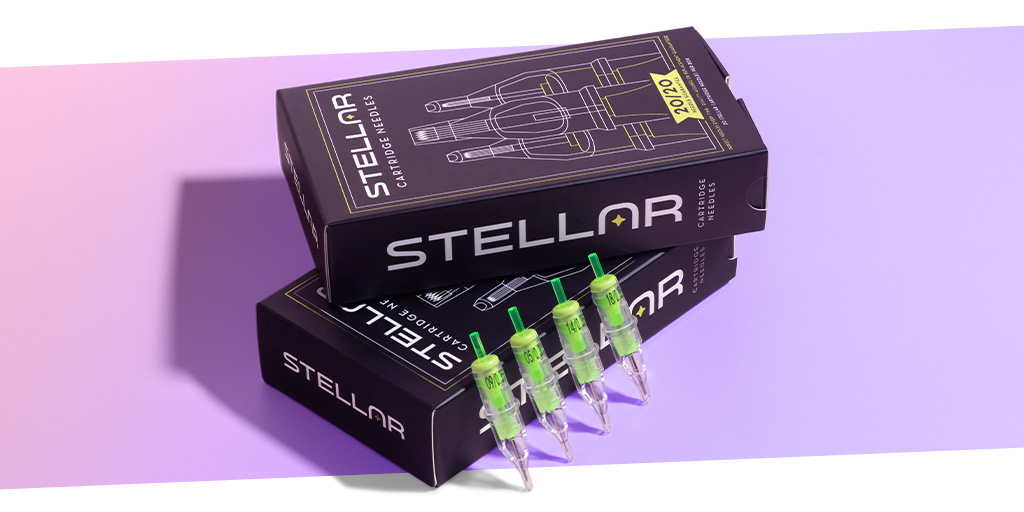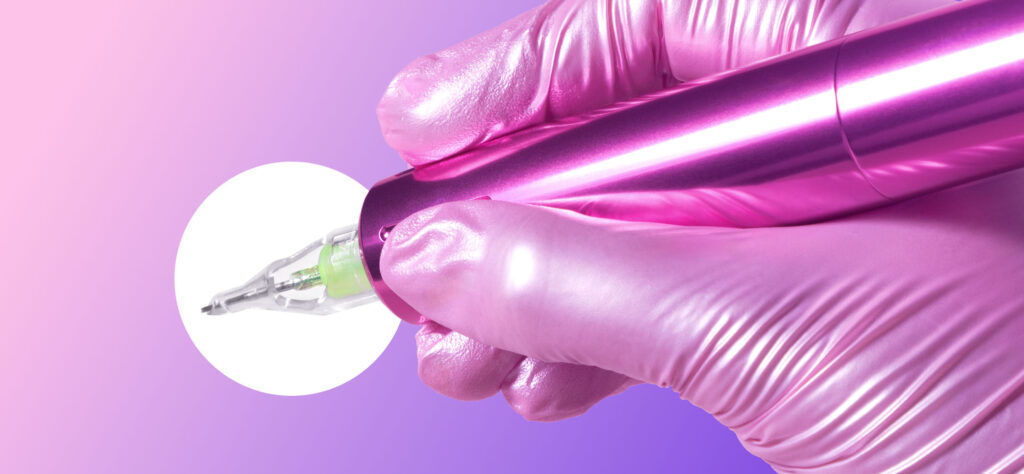Permanent Makeup Needle Cartridge Guide
Understanding the ins and outs of permanent makeup cartridges is essential if you’re planning on becoming a PMU artist!
While all accredited courses should cover the topic of needle sizes, configurations and shapes, we’ve opted to put together this guide to PMU needle cartridges to help those starting out, as well as experienced artists who need a refresher!
Permanent makeup uses a lot of the same tools and equipment as tattooing, but when purchasing for PMU treatments there may be slightly different considerations to take - not least what kind of treatment you’re doing!
It might seem like there are too many good options for cartridges, which is why we’re here to help you understand the differences, what the labels mean, and how to take your client’s treatment and skin type into consideration!
Make sure to note that cartridge companies may use different terms for their cartridges, and this list won’t be exhaustive!
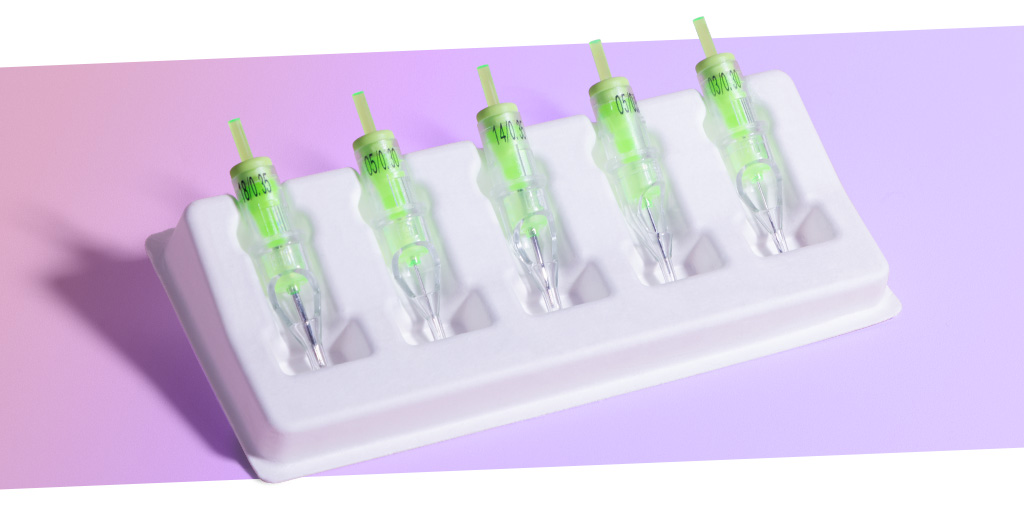
PMU Cartridge Needles Configurations
One of the most common configurations of cartridge, round liners are great for creating round lines!
Round liner cartridges start with just one needle and can come with multiples, but they’ll always be positioned in a tightly grouped circle, allowing you to get a clear, crisp line.
PMU artists love round liners for fine hair strokes, winged eyeliner outlines, and for crisp lip lines before shading the body of the lip. It’s also not unheard of for artists to use round liner cartridges with a larger number of needles for shading or pixel work!
Very similar to Round Liners, Round Shaders are a little more spread apart to allow for extra pigment flow in and around the needles.
These are perfect for soft, pixelated effects, especially on the brows or lips.
More common in traditional tattooing than in PMU, magnum needles can nevertheless be used to incredible effect! Magnums usually consist of two rows of needles grouped together, and are ideal for packing colour into an area.
Curved or soft edge magnum needles will have a slight tapering at each side, creating a curve that you can use to trace the natural curve of areas like eyelid, brow arch, or lips. We do recommend latex practice first if you want to trial magnum needles for PMU, before using on a client to ensure you’re using them confidently and correctly!
Flat
Flat needle configurations are positioned in a single flat line, and can be used for more geometric designs in areas like brows, eyeliner, and lips. These are less common, and may be used by more experienced artists!
Slope cartridges have their needles grouped together at an angle, making them perfect for the creation of lines, shading and pixels, although most commonly used for lip and brow treatments. Not all PMU cartridge brands will have a Slope option, but we offer slope configurations from Vertix Pico, Kwadron, TATSoul, Revolution and Magic Moon.
Sometimes it’s a good idea to think outside the box - with lots of practice and experience, you can use your needles however you see fit!
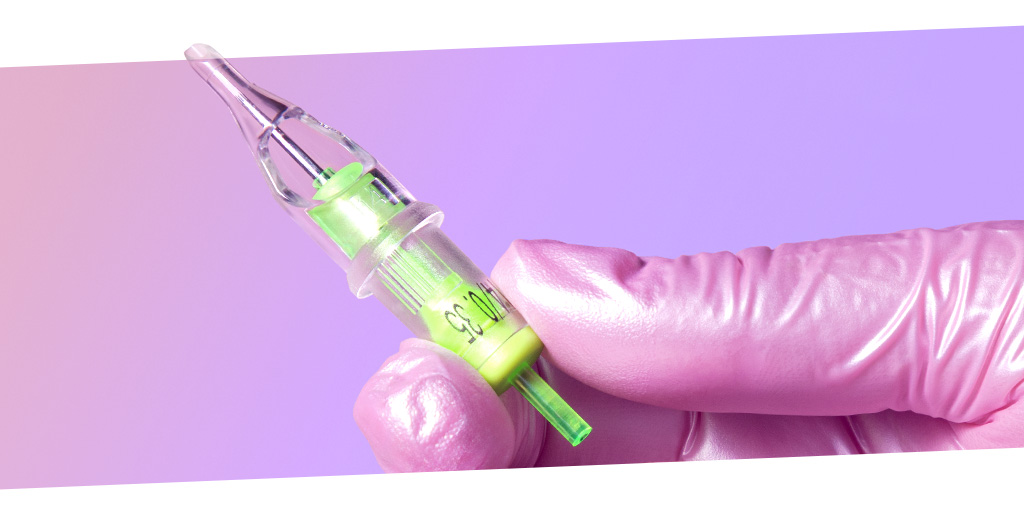
Numbers & diameters of needles
Your cartridge will come with different numbers and sizes of needles, depending on what you plan to use them for. Generally speaking, the higher the number of needles grouped together, the larger the pigment implantation area.
The number of individual needles can vary quite drastically, but in Round Liner configurations they’re mostly going to be between 1 and 7. Single needles are only ever found in Round Liner configurations, and you should expect that configurations such as magnum and flat have a higher number of needles.
Needle diameter is about the size of each individual needle within the cartridge - the smaller the diameter of the needle, the smaller the puncture, and the more delicate and precise the pigment implantation. What that means is that fewer needles with smaller diameters will create much finer lines; large diameters and configurations will deposit more pigment quickly.
Generally speaking in PMU we want extra accuracy, which means that most PMU needles will be slightly narrower, commonly between 0.20 and 0.35 mm. Thinner needles can reduce trauma to the skin, which is why they’re loved by PMU artists.
Understanding the packaging
So far so good? Now here’s where it can get a little confusing: needle identification.
Labelling can vary over different brands, but generally speaking, the needle codes will look something like this:
1RL0.25
The 1 at the beginning refers to the number of needles in the configuration - in this case, one. The letters RL indicate a Round Liner, and may be RS for Round Shader, M or MAG for Magnum and F for Flat. Finally, the number with the decimal point is the needle diameter of 0.25 mm. In tattoo cartridges, you may see the diameter referred to as a gauge instead, but this is much less likely in PMU!
If you can understand tattoo needle sizes, you’ll have no trouble understanding them for PMU!
Long vs. short tapers
We have a whole in-depth blog demystifying needle tapers and when to use what length, but here’s a quick refresher for you!
The taper length refers to the part of the needle that goes from a straight bar to a point – the ‘sharp’ part of the needle. Needles with a shorter taper will make larger punctures in the skin, and implant pigment a lot faster.
Medium to long taper needles are most common in the PMU industry as it’s common to pass over the same area multiple times and using a longer taper will reduce skin trauma and prevent excess damage to the skin, improving the healing period and results.
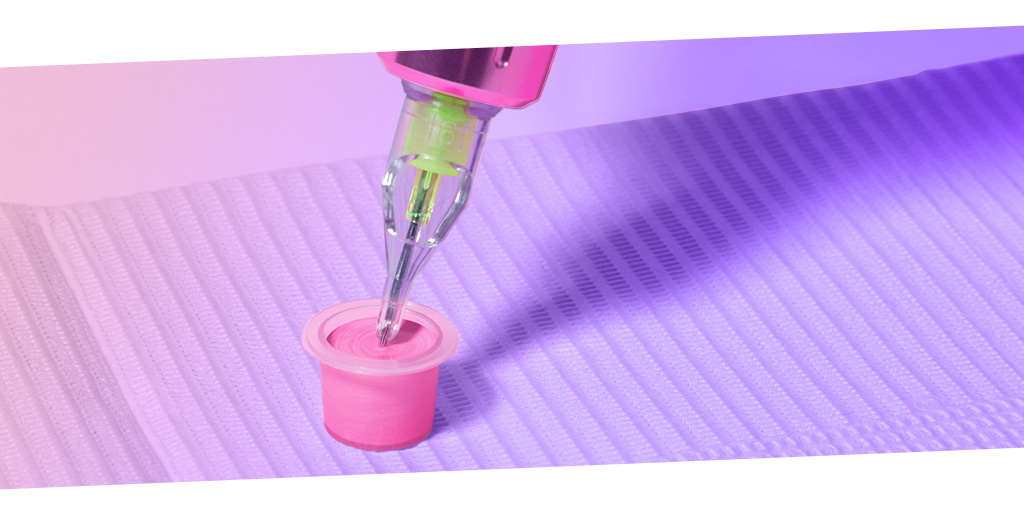
PMU cartridges vs traditional tattoo cartridges
There are a lot of similarities between PMU and tattoo cartridges, but one of the major differences is the size of the cartridge shell. PMU cartridges tend to be thinner and with longer tips to allow for extra precision and accuracy, allowing the artist to see finer details more easily.
The PMU cartridges we stock have the highest hygiene and safety standards, fit regular PMU machines, and are designed to work with PMU pigments rather than tattoo inks - generally, they will work for fine line tattoo work though!
The importance of safety membranes
Although this is a widely known must in the PMU industry, the best PMU needles you can buy will contain a safety membrane!
These internal plastic membranes have two purposes: they prevent pigment, plasma and blood from travelling up into the machine where it can damage the inner workings, and they also draw the needle into the cartridge while it isn’t being used to avoid the chance of needle stick injuries.
We would always recommend using a PMU cartridge with a secure safety membrane and you can rest assured that we only stock PMU cartridges with a membrane, to promote the safest treatments for all our artists.
Compatibility
Most of the PMU cartridges we sell on Killer Beauty are compatible with most of our PMU machines, but we will always inform you of compatibility!
The most common type is referred to as “universal”, or if you’re looking at tattoo cartridges, you might see them referred to as “Cheyenne-type”. Some machines use specific needle systems like screw-on or clip-in, such as the Magic Dermo machines which have interchangeable grips for three different types of cartridge.
Microblading Needles
If you’re here to learn about the best microblades for your microblading treatments, you’ll be better off going to our blog on Microblading Supplies, or you can learn more about the different types of microblading and microshading needles available.
Which cartridge should I choose?
A lot of factors go into choosing the correct cartridge, including your choice of machine, pigments, your training, the client’s skin, and more. We do have some suggestions based on treatment in our blogs on choosing the right needle cartridge for brows and for lips!
We’re huge fans of the Stellar 2.0 range of cartridges - while these were originally designed for tattoo purposes, they are just as good for PMU, especially the smaller sizes and configurations. 1 Round Liners with a 0.20 and 0.25mm diameter and extra long taper are perfect for crisp lip lining or fine hair strokes, but the Round Shaders, Flats and Curved Magnums from Stellar 2.0 are perfect for other purposes!
You can find out all about why we love Stellar 2.0 cartridges on our dedicated blog, or get a box to try for yourself!
